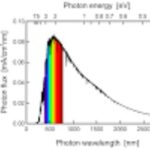Phosphorus is a critical element that cycles through the Earth’s systems, including the biosphere, hydrosphere, and geosphere, playing an indispensable role in sustaining life. Primarily found in phosphate minerals within sedimentary rocks of the Earth’s crust, phosphorus embarks on a journey through weathering and erosion, dissolving into soils and waterways, eventually reaching the oceans.
This elemental journey is fundamental because phosphorus is a cornerstone of life’s building blocks. Plants and phytoplankton, the primary producers in both terrestrial and aquatic ecosystems, absorb phosphates from their surroundings. This absorbed phosphorus is crucial for synthesizing essential organic molecules necessary for the survival and growth of all living organisms. It’s a key component in molecules like DNA and RNA, the blueprints of life, and ATP, the energy currency of cells. Phosphorus is also vital in the phospholipids that form cell membranes, and for the development of bones and teeth in animals.
The phosphorus taken up by organisms is not permanently locked away. It returns to the environment through natural processes. Animal waste and the decomposition of dead organisms release phosphates back into the soil and water, completing the cycle and making phosphorus available again for uptake by primary producers.
However, the phosphorus cycle is significantly influenced by human activities. Mining for phosphate rocks to produce fertilizers introduces large quantities of phosphorus into ecosystems. While fertilizers boost agricultural productivity, excess phosphorus, along with phosphorus from detergents and sewage, can disrupt natural balances. A prime example is the increased runoff into water bodies, leading to eutrophication and harmful algal blooms, as seen in Lake Erie. These blooms, while visually striking, can deplete oxygen levels in water, harming aquatic life and disrupting ecosystem health.
Understanding the phosphorus cycle and its essential role in life, as well as the impact of human activities on this cycle, is crucial for developing sustainable practices that ensure the health of our planet and its ecosystems. Recognizing the delicate balance of this nutrient cycle allows us to address issues like pollution and resource management more effectively, safeguarding the life-sustaining processes of our Earth.

